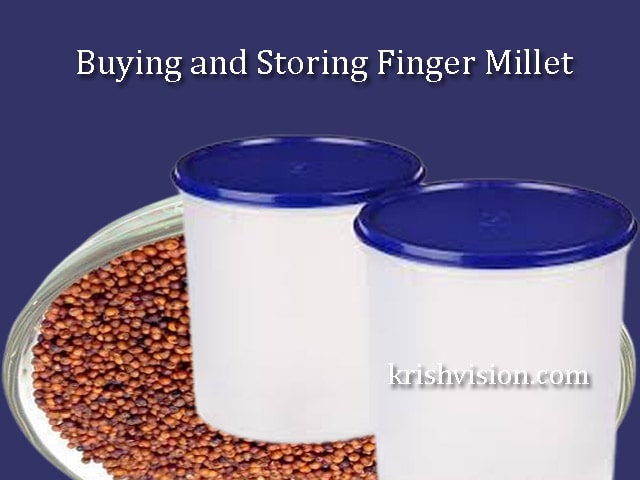Welcome, dear readers! Join us on an enlightening exploration of finger millet’s wonders. Discover its exceptional nutritional value, potential health benefits, and practical tips to incorporate into your diet. Embrace the finger millet revolution for a healthier you. Let’s embark on this nourishing journey together!
In recent years, there has been a growing interest in the world of nutrition and health regarding the remarkable benefits of finger millet. This ancient grain, scientifically known as Eleusinian coracana, has attracted the attention of health enthusiasts and experts alike because of its exceptional nutritional value and potential health-promoting properties. In this article, we aim to explore the wonders of finger millet, which will give you a deeper understanding of its various aspects. Let’s know about finger millets through this article.
Read More! 21 Inspiring Quotes to Help You Pursue Your Dreams.
Finger Millet’s Rich History
Finger millet has been a staple food in many parts of the world for centuries, particularly in Africa and Asia. Its cultivation dates back thousands of years, making it one of the oldest known crops. Eleusine coracana, commonly known as finger millet or ragi in India, holds a prominent place in the agricultural landscapes of Africa and Asia. This annual herbaceous plant also referred to as Kodo in Nepal and “kurakkan” in Sri Lanka, thrives in arid and semiarid regions. Its tetraploid and self-pollinating nature likely evolved from its wild counterpart, Eleusine africana.
Indigenous to the Ethiopian and Ugandan highlands, finger millet exhibits intriguing crop characteristics. It demonstrates remarkable adaptability, thriving at altitudes surpassing 2000 meters above sea level. Notably, this grain boasts high drought tolerance and offers extended grain storage capability.
Although finger millet traces its roots back to East Africa, an initial claim of its discovery in an Indian archaeological site dating back to 1800 BCE was subsequently debunked. The oldest known record of finger millet hails from an 8th-century AD archaeological site in Africa.
In Africa, the cultivation of finger millet faced a decline by 1996 due to the labor-intensive nature of its cultivation. Farmers began favoring nutritionally inferior but less labor-intensive crops like maize, sorghum, and cassava. Conversely, Asia did not witness a similar decline in finger millet cultivation.
Read More Amazing Articles on krishvision.com. Blog Zone
Finger Millet’s Nutrient Profile
When it comes to nutrition, finger millet stands head and shoulders above other grains. It boasts an impressive array of essential nutrients, making it a true powerhouse. Rich in dietary fiber, finger millet aids in digestion and promotes a healthy gut. Additionally, it is an excellent source of minerals like calcium, iron, and phosphorus, which are vital for maintaining bone health, enhancing oxygen transport, and supporting overall body functions.
Furthermore, finger millet is packed with vitamins, including vitamin C, vitamin E, and several B vitamins such as thiamine, riboflavin, and niacin. These vitamins play critical roles in energy production, immune system support, and cognitive function. Antioxidants in finger millet help combat oxidative stress and reduce the risk of chronic diseases.
Read More! Transform Your Home with Green Living.
Finger Millet’s Potential Benefits
Finger millet, known as ragi, is a nutrient-rich grain with a multitude of advantages. Packed with essential nutrients such as carbohydrates, dietary fiber, protein, calcium, iron, and potassium, it offers a powerhouse of health benefits. Being gluten-free, it serves as a fantastic alternative for individuals with gluten sensitivity. Moreover, its high fiber content aids digestion, regulates blood sugar levels, promotes weight management, and strengthens bone health.
With its heart-healthy antioxidants, finger millet also supports cardiovascular well-being. Additionally, it has been traditionally recognized for its potential in enhancing lactation and serving as an optimal grain for infant nutrition. Its cultivation contributes to sustainable farming practices, making it an environmentally friendly choice. Let us know the health benefits of finger millet.
Managing Diabetes
Finger millet possesses a low glycemic index, making it an ideal choice for individuals with diabetes or those aiming to regulate blood sugar levels. Regular consumption of finger millet has shown promising results in controlling blood glucose levels, thus contributing to diabetes management.
Enhancing Heart Health
The high fiber content in finger millet helps lower cholesterol levels and reduces the risk of cardiovascular diseases. It acts as a natural defense against heart ailments by maintaining healthy blood pressure and promoting proper blood circulation.
Supporting Weight Management
With its rich fiber content and low-fat profile, finger millet aids in weight management. It provides a feeling of fullness and helps control cravings, contributing to healthy weight loss or maintenance.
Boosting Immunity
The presence of immune-boosting compounds, antioxidants, and essential vitamins in finger millet fortifies the body’s defense mechanisms. Regular consumption can enhance immune function and reduce susceptibility to common illnesses.
Nurturing Maternal Health
Finger millet is a valuable grain for expectant and lactating mothers. It contains essential nutrients like iron and folate, which are crucial for preventing anemia and supporting the healthy development of the fetus.
Boosts Bone Health
Finger millet is rich in calcium and iron, essential minerals for maintaining strong bones and preventing conditions like osteoporosis and anemia.
Promotes digestion
The high fiber content in finger millet aids in digestion and can help prevent constipation. It also promotes a healthy gut by acting as a prebiotic, supporting the growth of beneficial bacteria in the digestive system.
Potential for infant nutrition
Finger millet is a suitable grain for introducing to infants as it is easily digestible and rich in essential nutrients. It can be used in the preparation of porridges or as a weaning food.
Apart from these above-mentioned features, finger millet offers a plethora of additional benefits. This incredible grain is packed with antioxidants, which play a crucial role in combating oxidative stress and reducing inflammation in the body. Finger millet’s unique combination of essential nutrients, including vitamins A, B-complex, and E, further contributes to its nutritional value.
Additionally, its versatility shines through in various culinary applications. Finger millet can be stuffed into parathas, added to soups and stews, or even used to prepare delicious and nutritious baked goods. Its rich, nutty flavor adds a delightful twist to any dish.
Finger Millet: Practical Tips and Delicious Recipes

Now that we have explored the myriad benefits of ragi, you must be wondering how to incorporate this nutrient-rich grain into your daily diet. We have put together some practical tips and mouth-watering recipes.
Read More! How to Become a Computer Expert.
Breakfast Delights
Start your day with a nutritious bang by preparing finger millet porridge. Simply cook finger millet flour in water or milk, add a touch of honey or your favorite fruits, and savor the wholesome goodness. You can also explore finger millet pancakes or dosas for a delightful twist on traditional breakfast options.
Wholesome Lunch and Dinner
Substitute refined grains with finger millet in your meals for a healthier alternative. Use finger millet flour to make rotis, bread, or noodles. Combine cooked finger millet with vegetables and spices to create flavorful pilafs or savory bowls. The versatility of finger millet opens up a world of culinary possibilities.
Nutritious Snacks
Finger millet can also be transformed into delicious and nutritious snacks. Bake finger millet cookies or make energy bars using a combination of finger millet, nuts, and dried fruits. These snacks will keep you satiated and energized throughout the day.
Dessert Delicacies
Who says desserts can’t be healthy? Experiment with finger millet in your sweet treats. Prepare finger millet halwa or kheer by combining cooked finger millet with milk, jaggery, and aromatic spices. Indulge in guilt-free desserts that satisfy your sweet tooth while nourishing your body.
In addition to the uses above, finger millet can also be a valuable addition to your everyday cooking. By incorporating finger millets into your day-to-day meals, you can elevate their nutritional content and introduce a delightful twist to your favorite dishes.
Start by exploring finger millet’s potential in various staple foods like rice and lentils. Add a handful of soaked finger millet grains to your rice cooker along with rice and water to create a wholesome and fiber-rich rice dish. The cooked grains of finger millet blend seamlessly with the rice, offering a subtle nutty flavor and enhancing the overall nutritional value of the meal.
For lentil-based dishes, such as soups, stews, or dals, consider including finger millet to enhance their texture and nutritional profile. The addition of finger millet grains not only provides a satisfying crunch but also contributes dietary fiber, protein, and essential minerals, making your meals more balanced and nourishing.
Beyond the traditional, finger millet can be incorporated into a variety of dishes. Try adding roasted finger millet grains to salads for an extra bite and a nutritional boost. You can also grind finger millet into flour and use it as a gluten-free alternative in baking recipes.
From bread to cookies and pancakes to muffins, finger millet flour can infuse your baked goods with a unique flavor and a wealth of nutrients. Experiment with finger millet in your day-to-day cooking and allow its versatility to shine.
Buying and Storing Finger Millet: Tips for Optimal Quality

When it comes to buying and storing finger millet, ensuring optimal quality is key. Learn valuable tips for selecting the best finger millet grains and storing them properly to maintain their freshness and nutritional value. To fully enjoy the benefits of finger millet, it’s important to choose and store it properly. Follow these tips for optimal quality:
Read More! The journey toward a peaceful life.
Look for Freshness
When purchasing finger millet, ensure that it is fresh and free from moisture or insect damage. Opt for trusted brands or suppliers to guarantee high-quality products.
Proper Storage
Store finger millet in an airtight container in a cool, dry place. This will help maintain its freshness and prevent any unwanted moisture.
Regular Inspection
Periodically check your finger millet for any signs of spoilage or infestation. Discard any grains that appear discolored, moldy, or have a strange odor.
Finger millet deserves its place in the spotlight as a super grain that offers a wealth of health benefits. Its remarkable nutritional profile, combined with its potential to manage diabetes, promote heart health, aid weight management, boost immunity, and support maternal health, makes it a true game-changer in the world of nutrition.
By incorporating finger millet into your diet through our suggested tips and delectable recipes, you can harness its full potential and embark on a journey toward optimal health and well-being.
With patience and attention, we hope you have found this article on finger millet insightful and helpful. By exploring its potential benefits, practical tips, and delicious recipes, we aim to inspire you to incorporate finger millet into your daily meals. We encourage you to try out the suggested ideas and recipes, and we welcome your valuable feedback and suggestions. Embrace the goodness of finger millet and embark on a journey of healthier and tastier eating.




